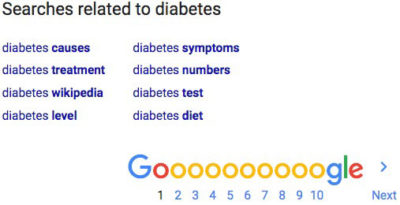Welcome back to our series on social media for pharma brands. Hopefully, part one and part two have provided some food for thought for choosing the best platform and optimizing your profile so that your audience will discover it. Part three will provide some suggestions on how to produce quality pharma content.
Try to begin content production as soon as you’ve chosen your platform (or platforms). Starting the process as early as possible will give you enough time to collect data, interview subjects, shoot videos, compile infographics, reach out to influencers, and fill out your profile with original content so that it can be promoted. Your first step to rolling out quality content? A lengthy brainstorming process.
Brainstorming Pharma Content Ideas
Coming up with relevant ideas for pharma content isn’t difficult—but weeding out the noise and finding what will really resonate with your audience is. Here are some ideas for finding ideas that will get users engaging with your brand:
Look up posts on social media support groups for your brand’s patients.
- What are patients talking to each other about?
Pay for opinions on survey sites like SurveyMonkey.
- This is an effective way to get content ideas for common afflictions. You will be able to easily find large numbers of targets through the platform’s survey audiences.
Check subreddits relevant to your patient group.
- Reddit is a social media network centered around user-created communities called ‘subreddits.’ There are subreddits for world news, politics, video games, fishing, cats sticking their tongues out—pretty much anything. There are many subreddits for health conditions.
- While surveys are good for common afflictions, subreddits are better for discovering content ideas for chronic conditions. Find out if there is a subreddit created around the condition that your brand is indicated to treat. You may be surprised—sometimes there are several!
- If there’s a subreddit for your brand’s indication, then sort the results for ‘Top – All Time’ to glean some quick content ideas that have already been vetted by your desired audience.
Conduct interviews.
- This one is more expensive, but it can be really productive if you ask the right questions, especially where chronic conditions are concerned:
- What’s their biggest challenge with the condition they’re facing?
- What’s their favorite coping strategy?
- Which part of their life is most affected by it?
- What thoughts go through their head when they find out they are about to experience the condition again?
- Is there a time of day they dread more than any other when they have the condition?
- Is there a particular song that reminds them of these feelings?
- This one is more expensive, but it can be really productive if you ask the right questions, especially where chronic conditions are concerned:
Check related searches.
- Google various keywords about your brand, the affliction it treats, non-traditional remedies—anything relevant.
- At the bottom of the page, you’ll find suggestions for topics based on what other people have searched for. These could all be potential topic ideas.

Each of these related topics can be the focus of at least several pieces of content

Examples of content that could be created around the ‘diabetes diet’ topic
The Key to Quality Pharma Content
Quality content provides useful tips and unites its audience with a shared experiences. It explores what’s interesting to its audience and makes the best information accessible under a common theme. Find a common theme for each piece of content and remember to keep your themes focused on patients’ lives.
Use your social media keyword research to create topics and tap into your survey findings for insight. Alternate content featuring lifestyle recommendations, promotional claims (with fair balance), fun blue-sky posts, and audience outreach posts that solicit anecdotes. Doing so will keep your posting consistent and your topics varied, which are both equally important.
Create a Content Calendar
Once you’ve decided which topics you’ll be producing content around, it’s time to make a content calendar. A well-crafted content calendar is critical. Content calendars are the framework for consistently including keyword research findings, keeping topics varied, and ensuring that posts are made at the right cadence. Even if your cadence is more spaced out than the usual profile, adhering to a content calendar keeps your audience from thinking your page is dead. They’ll know when to expect more content rather than letting routine checks of your page fall out their habits.
Additionally, a pharma content calendar is a useful pitch tool when approaching patient influencers. You‘ll be able to show them what your page will be about so they can determine if a partnership is a good idea. Influencers have to worry about their image, and your average consumer probably isn’t that big of a fan of pharma companies. They might be concerned about how audiences will react to their promotion of a pharmaceutical product. Showing influencers that your profile will offer something of value to their followers (rather than serving as another medium for a hard sell) can make a difference in their decision to work with you.
Survey Audiences for More Ideas
Once your content calendar is running like a well-oiled machine, survey the followers you earn and plan future content based on their input.
Ask them whether they want to see more content about lifestyle tips, treatment options, daily struggles, and so on. You can ask them about their preferences regarding the format of content as well. Your followers might want to see more infographics rather than text-based lists. They might want to have more opportunities to submit user-generated content via contests. They may have followed your profile in hopes of participating in Facebook Live Q&A events.
Surveys are also useful because they can help you gauge interest in pharma content that you are planning. Projects like Facebook Live events and contests require more of an investment than a typical post. It’s wise to find out if people will participate before investing time and money in larger initiatives.
Facebook Profile Surveys vs. Facebook Group Surveys
As we discussed in part one, Facebook group surveys allow you to add many different options. They also allow users to add their own options.
Facebook profile surveys only allow you to list two options, and users can’t add their own options to the survey. On Twitter, things are easier because you can add as many choices as possible.
Conducting follower surveys won’t be possible in the beginning of your profile’s journey. This makes the ‘Brainstorming Content Ideas’ section even more important early on in your profile’s life. Again, the more time you give yourself to produce content, the better content you’ll produce, and the more followers you’ll earn!
Publish the Same Ideas on a Blog
Round out your content push by publishing social media content to a blog section of your unbranded website (if you have one). Search engines reward websites that consistently post topical content by giving them better visibility for search keywords. If you post content to your blog consistently, you’ll be able to earn higher rankings on search engines for people who search about the condition that your brand treats. Over time this strategy will make your website more visible to patients and healthcare providers who search for information about the condition that your drug treats. Your brand will be able to generate prescriptions without needing to spend as much on promotion. Increase your ROI in the long run—nurture your blog as well.
Check Out Part Four on Campaigns
Check out part four on pharmaceutical social media campaigns here!
Stay Tuned for Part 4 – Pharmaceutical Social Media Promotion
Once you’ve populated your page with four to five pieces of content you can promote it and start earning a following. We’ll be covering the best tactics to promote your page and provide real-world examples in part four, so check back in with us soon!

